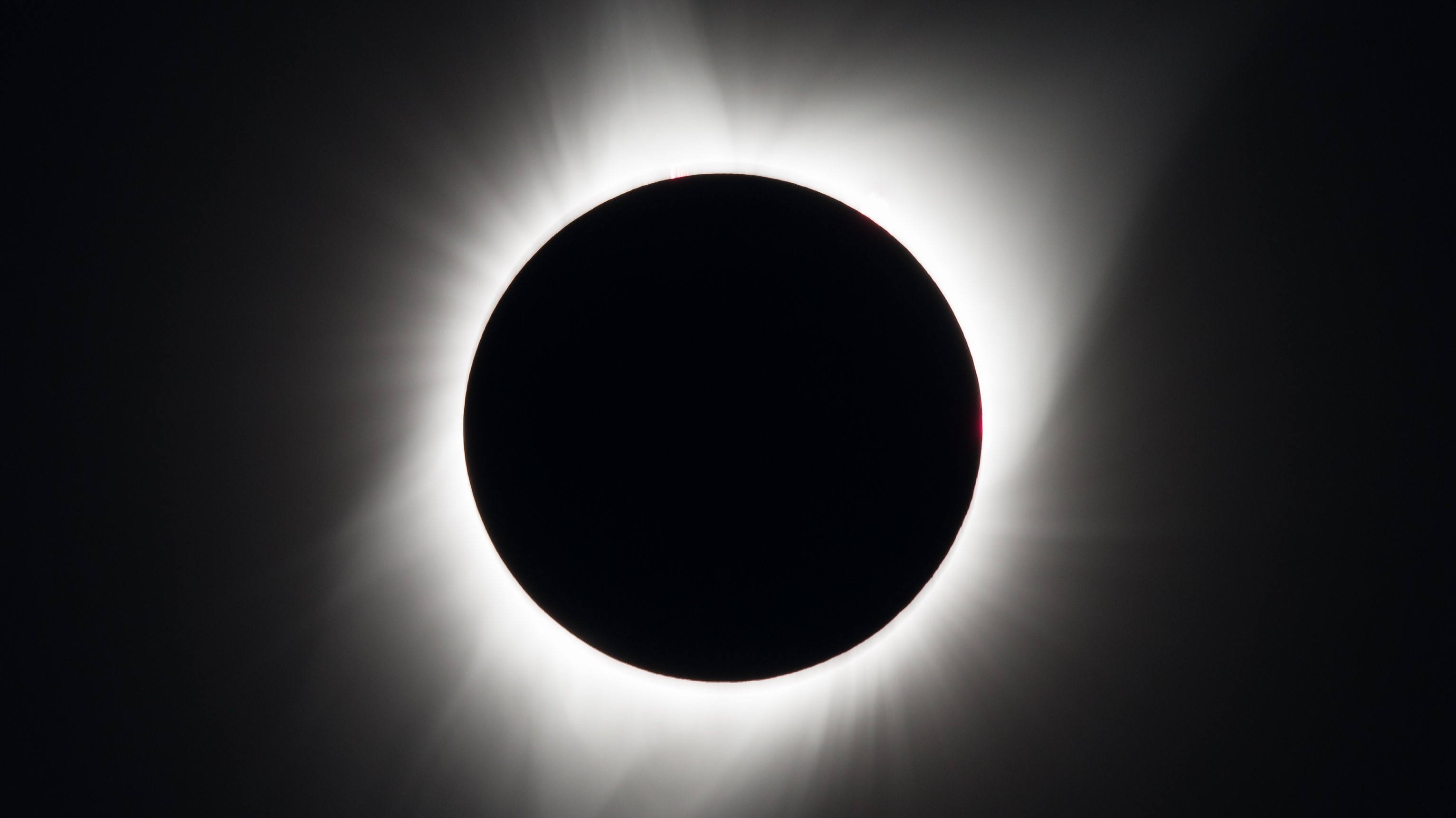NASA will study the Great North American Solar Eclipse of 2024 with these 5 experiments
The eclipse will be visible to many people in North America on April 8, 2024.

NASA has selected five science experiments that it will fund to study the sun and Earth during the Great American Eclipse of 2024.
On April 8, 2024, a total solar eclipse, during which the moon completely blocks out the disk of the sun, will darken skies across the United States. The path of totality, averaging 123 miles (198 kilometers) wide, runs from southwest Texas to northern New England and includes cities such as San Antonio, Austin, Dallas-Fort Worth, Little Rock, Indianapolis, Cleveland, Buffalo, Rochester, Syracuse and Burlington.
The duration of totality will vary depending on viewers' location, ranging from nearly four and a half minutes in Texas to about three and a quarter minutes in Maine. This total solar eclipse gives scientists a unique opportunity to study the interaction between the sun and Earth.
Related: The Great American Solar Eclipse of 2024 is just 1 year away!
"Seven years after the last American total solar eclipse, we're thrilled to announce the selection of five new projects that will study the 2024 eclipse," Peg Luce, acting director of the Heliophysics Division in the Science Mission Directorate at NASA Headquarters in Washington, said in a statement from the agency. "We're excited to see what these new experiments will uncover about our sun and its impact on Earth."
The five NASA-selected projects are led by researchers at different academic institutions and encourage citizen scientists to participate, too. The experiments will use a variety of instruments, including cameras aboard high-altitude research planes, ham radios and spectrometers.
"Scientists have long used solar eclipses to make scientific discoveries," Kelly Korreck, program scientist at NASA Headquarters, said in the statement. "They have helped us make the first detection of helium, have given us evidence for the theory of general relativity, and allowed us to better understand the sun's influence on Earth's upper atmosphere."
Get the Space.com Newsletter
Breaking space news, the latest updates on rocket launches, skywatching events and more!
One of the projects selected will use NASA's WB-57 high-altitude research aircraft, which will "chase the eclipse" and capture images of the moon's shadow from an altitude of 50,000 feet (15,000 meters) above Earth's surface. The plane is equipped with cameras to capture images in infrared and visible light at high resolution and high speed. This will allow scientists to study the sun's outer atmosphere, called the corona, as well as the dust ring around the sun where asteroids may be found.
The cameras on NASA's WB-57 will also be used on a project that aims to study the temperature, structure and chemical composition of the corona and large bursts of solar material known as coronal mass ejections.
Using ham radios, researchers will study changes in Earth's ionosphere during the total solar eclipse to better understand the impact on radio wave transmissions. Generally, this region of the atmosphere is electrically charged, or "ionized," by energy from the sun, which benefits radio communications. Therefore, this experiment, called the Solar Eclipse QSO Party, invites ham radio operators in different areas to test how the strength of their radio signals is affected when the moon blocks out the sun's powerful rays.
Another experiment using data from the Super Dual Auroral Radar Network (SuperDARN) will also take a close look at the ionosphere and the effect solar radiation has on the upper layers of Earth's atmosphere during the eclipse. Three SuperDARN radars, which generally monitor space weather conditions, are located in areas that fall within the eclipse's shadow.
Lastly, NASA will fund a project designed to study changes in solar ''active regions'' — the magnetically complex regions that form over sunspots. Using the Goldstone Apple Valley Radio Telescope (GAVRT) in California, researchers will study light signals coming from different active regions as the moon passes between the sun and Earth.
You can read more about each of the five NASA-funded solar eclipse projects online.
Editor's Note: Never look at the sun with binoculars, a telescope or your unaided eye without special protection. Astrophotographers and astronomers use special filters to safely observe the sun during solar eclipses or other sun phenomena. Here's our guide on how to observe the sun safely.
Follow Samantha Mathewson @Sam_Ashley13. Follow us on Twitter @Spacedotcom and on Facebook.
Join our Space Forums to keep talking space on the latest missions, night sky and more! And if you have a news tip, correction or comment, let us know at: community@space.com.

Samantha Mathewson joined Space.com as an intern in the summer of 2016. She received a B.A. in Journalism and Environmental Science at the University of New Haven, in Connecticut. Previously, her work has been published in Nature World News. When not writing or reading about science, Samantha enjoys traveling to new places and taking photos! You can follow her on Twitter @Sam_Ashley13.









